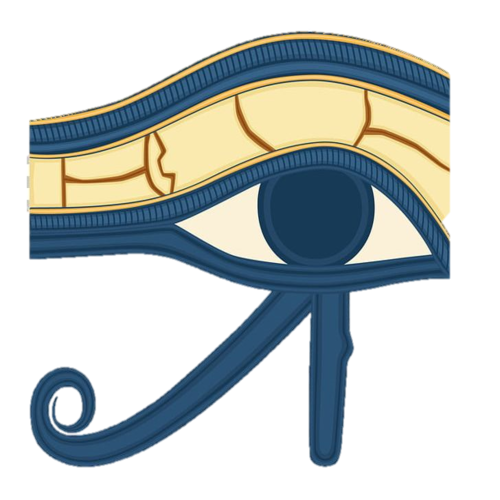| Preceded by: Ramesses VII |
Pharaoh of Egypt 20th Dynasty |
Succeeded by: Ramesses IX | ||||||||||||||||||
| Ramesses VIII | ||||||||||||||||||||
|---|---|---|---|---|---|---|---|---|---|---|---|---|---|---|---|---|---|---|---|---|
| Prince: Setherkhepeshef | ||||||||||||||||||||
 Relief of Prince Setherkhepeshef (later Ramesses VIII) in the procession of princes at Medinet Habu. | ||||||||||||||||||||
| Reign | 1130-1129 BC (c. 1 year) | |||||||||||||||||||
| Praenomen |
The Justice of Re is Powerful, Effective for Amun | |||||||||||||||||||
| Nomen |
Meryamun Born of Re, Seth is with his Strong Arm, Beloved of Amun | |||||||||||||||||||
| Father | Ramesses III | |||||||||||||||||||
| Mother | Minefer | |||||||||||||||||||
| Died | 1129 BC | |||||||||||||||||||
| Burial | Unknown | |||||||||||||||||||
- For other pages by this name, see Ramesses.
Usermaatre Akhenamun Ramesses VIII (1130-1129 BC) was the seventh Pharaoh of the Twentieth Dynasty during the New Kingdom. He is thought to has been a son of Ramesses III. His name prior to assuming the crown was Setherkhepeshef.
Family[]
- See also: 20th Dynasty Family Tree.
Ramesses VIII was probably a son of Pharaoh Ramesses III based on his appearance in the latter's procession of princes at Medinet Habu. His mother was probably Minefer, as it would account for her attested "King's Mother" title. Although Leblanc has speculated Tiye to have been his mother instead.[1] Ramesses VIII is attested with the title "King's Eldest Son of His Body" (zꜣ nswt tpỉ n ḥm.f), which has been interpreted to mean that he was the eldest son alive upon death.[1] Alternatively, it could mean that he was the firstborn son by a particular consort.
Titles[]
As prince Setherkhepeshef, Ramesses VIII held many prominent titles such as; "Count" (ḫꜣtyꜥꜣ), "God's Father" (ỉt-nṯr), "Sem Priest of the Perfect God" (sm-n-nṯr-nfr), "First Charioteer of His Majesty" (ḳḏn-tpy-n-ḫm.f), "Fanbearer on the King's Right Hand" (ṯꜣy-ḫw-ḥr-wnmy-n-nỉsw), "Great Overseer of the Horses" (ỉmy-r-ssmt-wr), and Great Overseer of the Army (ỉmy-r-mšꜥ-wr).[2] The latter title undoubtedly making him heir apparent to the throne during the last years of Ramesses VII's reign.
Dates and Length of Reign[]
Ramesses VIII is the most obscure ruler of this Dynasty, and the current information from his brief kingship suggests that he lasted on the throne for one year at the most.[3][4]
Ramesses VIII's only known date is a Year 1, I Peret day 2 graffito in the TT113 tomb of Kynebu at Thebes.[5] According to Erik Hornung,[6] the accession date of Ramesses VIII has been established by Amin Amer to date to an eight-month interval between I Peret day 2 and I Akhet day 13.[7]
The tomb inscription notes that it took 3½ months, from Year 1, I Akhet day 13 of Ramesses VIII, to start work and paint scenes on a tomb chapel in Kynebu's tomb, and up until Year 1, I Peret day 2 to complete the work.[7] Amer thus concluded that since no year change occurs in this time interval, the accession date for Ramesses VIII must fall outside this period of this text, "i.e., within I Peret 3 to I Akhet 12".[7]
Monuments and Attestations[]
Monuments from his reign are scarce, and consist primarily of an inscription at Medinet Habu, a mention of this ruler in one document — Berlin stele 2081 of Hori at Abydos — and one scarab.
Procession of Princes[]
At Ramesses III's procession of princes at Medinet Habu, no names and titles were applied for the carved figures of princes by Ramesses III at the intended spaces. The list had been inscribed for the most part by Ramesses VI, who inscribed the names of princes for most of the princely figures in procession.[8] Ramesses VIII is the only one known to have made an adjustment, by changing his own princely name to his royal nomen during kingship. He also added a uraeus to his princely figure to further emphasize his kingly status.[8]
Burial and Succession[]
Ramesses VIII is the sole pharaoh of the Twentieth Dynasty whose tomb has not been definitely identified in the Valley of the Kings. An all-Egyptian team of researchers headed by Afifi Rohiem under the supervision of Dr. Zahi Hawass were looking for the pharaoh's tomb.[9] The whereabouts of his royal tomb and mummy thus far remain unknown. Ramesses VIII was succeeded on the throne by his (half-)nephew Ramesses IX which – combined with the fact that Ramesses VIII himself succeeded to power after the death of another (half-)nephew Ramesses VII – may indicate a continuing problem in the royal succession.[3]
Before he became Pharaoh, the QV43 rock-cut tomb in the Valley of the Queens was constructed for him, when he was known as prince Setherkhepeshef, as suggested by an ostracon discovered in the valley. His princely tomb proved unsuitable when he became a king in his own right. Although some scholars have suggested that the KV19 tomb of Prince Mentuherkhepeshef, the son of his successor Ramesses IX, was originally started for Ramesses VIII as a prince instead.
See also[]
References[]
Bibliography[]
- Amer, A., 1981: A Unique Theban Tomb Inscription under Ramesses VIII. GM 49.
- Clayton, P., 1994: Chronicle of the Pharaohs. Thames & Hudson, London.
- Demas, M./Agnew, N., eds. 2016: Valley of the Queens Assessment Report: A Collaborative Project of the Getty Conservation Institute and the Supreme Council of Antiquities, Egypt. Vol. 1, Conservation and Management Planning. Getty Conservation Institute, Los Angeles.
- Dodson, A./Hilton, D., 2004: The Complete Royal Families of Ancient Egypt. Thames & Hudson, London.
- Grimal, N., 1992: A History of Ancient Egypt. Translated by Ian Shaw. Hoboken, New Jersey: Wiley-Blackwell publishing.
- Habachi, L., 1954: Khataana-Qantir: Importance. ASAE 52.
- Hornung, E., 2006: The New Kingdom. In: Erik Hornung, Rolf Krauss & David Warburton (editors), Handbook of Ancient Egyptian Chronology. Handbook of Oriental Studies, Brill.
- Murnane, W.J., 1971: The "King Ramesses" of the Medinet Habu Procession of Princes. Journal of the American Research Center in Egypt, Vol. 9.
| Predecessor: Ramesses VII |
Pharaoh of Egypt Twentieth Dynasty |
Successor: Ramesses IX |
